Concept and Development of an Accelerated Repeated Rolling Wheel Load Simulator (ARROWS) for Fatigue Performance Characterization of Asphalt Mixture
Abstract
:1. Introduction
2. Stress State in Asphalt Mixture under the Rolling Tire Load
3. Laboratory Fatigue Test Methods
3.1. Bending Beam Fatigue Test
3.1.1. 4PB Fatigue Test
- σt = Maximum tensile stress at the bottom of beam (Pa);
- P = Peak-to-peak force applied on beam (N);
- b = Average specimen breath (width) (mm);
- h = Average specimen height (mm);
- L = Length of beam span between outside clamps (mm);
- εt = Maximum tensile strain at the bottom of beam (1);
- u = Peak-to-peak deflection at center of beam (mm);
- S = Flexural beam stiffness (Pa).
- Et = Maximum tensile modulus (Pa);
- Ec = Maximum compressive modulus (Pa).
3.1.2. 3PB Fatigue Test
3.1.3. 2PB Fatigue Test
- ε = Relative strain of the specimen (-);
- Kεi = Constant in relation to the largest strain;
- z = Amplitude of the displacement at the head of the specimen;
- Bi = Length of long base edge;
- bi = Length of short base edge;
- hi = Height of the specimen (mm).
3.1.4. Loaded Wheel Fatigue Test
- σamp = Amplitude of sinusoidal stress (Pa);
- T = Testing cycle period (s);
- t = Elapsed testing time (s);
- P = Wheel load (N);
- L = Length of the loading path (m).
- εamp = Amplitude of sinusoidal strain (-);
- f = Loading frequency (Hz);
- ∆t = Time lag between stress and strain (s).
- E = Modulus of asphalt (Pa);
- k = Modulus of rubber (Pa);
- h = Beam thickness (m).
3.2. Axial Fatigue Test
3.3. Diametral Fatigue Test
- σt = Horizontal tensile stress at the center of specimen (Pa);
- σc = Vertical compressive stress at the center of specimen (Pa);
- a = Width of loading strip (m);
- h = Height of specimen (m).
3.4. Shear Fatigue Test
4. Full Scale Test Method
5. Summary and Discussion
6. Concept and Development of ARROWS
6.1. Characteristics of ARROWS
6.2. Description of ARROWS
- α = Included angle (°);
- E = Eccentricity;
- d = Diameter of the cam plate;
- b = Load ratio = γ1/γ2;
- σ = Standard deviation of the Gaussion distribution;
- U = Circumference of the cam plate.
7. Feasibility of ARROWS
8. Findings and Conclusions
- (1)
- The stress state in the lab specimens differs from that in the pavement. The tensile stress at the bottom of the asphalt layer is two-dimensional and contains a stress reversal at longitudinal direction. However, none of the available fatigue test methods are able to reproduce this 2D tensile stress.
- (2)
- The experimental results and the theoretical analysis reveal that the load waveform and stress ratio strongly affect the fatigue performance of asphalt mixture. This highlights the importance of reproducing field stress conditions when evaluating the fatigue performance of asphalt mixture in the lab.
- (3)
- The ARROWS is designed to better simulate the rolling motion of the tire load in the lab with a traffic speed using a special loading system. Specifically, vertical stress is applied to the test specimen via load stamps, which is connected to a shaft through a spring and a piston.
- (4)
- The FEM model indicates the similarity between the stress at the bottom of the asphalt slab of the ARROWS specimen and that at the asphalt layer of pavement. This indicates the feasibility and the effectiveness of using the ARROWS as an alternative to the currently available fatigue test methods.
Author Contributions
Funding
Institutional Review Board Statement
Informed Consent Statement
Data Availability Statement
Conflicts of Interest
References
- Leng, Z.; Zhang, Z.; Zhang, Y.; Wang, Y.; Yu, H.; Ling, T. Laboratory evaluation of electromagnetic density gauges for hot-mix asphalt mixture density measurement. Constr. Build. Mater. 2018, 158, 1055–1064. [Google Scholar] [CrossRef]
- Monismith, C.L.; Secor, K.E.; Blackmer, W.E. Asphalt mixture behaviour in repeated flexure. J. Assoc. Asph. Paving Technol. 1961, 30, 188–222. [Google Scholar]
- DIN Deutsches Institut für Normung, e.V. DIN EN 12697-24:2018 Asphalt—Prüfverfahren—Teil 24: Beständigkeit gegen Ermüdung; Deutsche Fassung EN 12697-24:2018; Beuth: Berlin, Germany, 2018; p. 68. [Google Scholar] [CrossRef]
- Kim, Y.R.; Baek, C.; Underwood, B.; Subramanian, V.; Guddati, M.N.; Lee, K. Application of viscoelastic continuum damage model based finite element analysis to predict the fatigue performance of asphalt pavements. KSCE J. Civ. Eng. 2008, 12, 109–120. [Google Scholar] [CrossRef]
- Lv, S.; Xia, C.; Liu, C.; Zheng, J.; Zhang, F. Fatigue equation for asphalt mixture under low temperature and low loading frequency conditions. Constr. Build. Mater. 2019, 211, 1085–1093. [Google Scholar] [CrossRef]
- Zhang, Z.; Oeser, M. Residual strength model and cumulative damage characterization of asphalt mixture subjected to repeated loading. Int. J. Fatigue 2020, 135, 105534. [Google Scholar] [CrossRef]
- Forschungsgesellschaft für Straßen- und Verkehrswesen e. V. (FGSV). RStO 12 Richtlinien für die Standardisierung des Oberbaus von Verkehrsflächen; Forschungsgesellschaft für Straßen- und Verkehrswesen e. V. (FGSV): Köln, Germany, 2012. [Google Scholar]
- Forschungsgesellschaft für Straßen- und Verkehrswesen e.V. (FGSV). RDO Asphalt 09 Richtlinien für die Rechnerische Dimensionierung des Oberbaus von Verkehrsflächen mit Asphaltdeckschicht; Forschungsgesellschaft für Straßen- und Verkehrswesen e. V. (FGSV): Köln, Germany, 2009. [Google Scholar]
- Mull, M.A.; Stuart, K.; Yehia, A. Fracture resistance characterization of chemically modified crumb rubber asphalt pavement. J. Mater. Sci. 2002, 37, 557–566. [Google Scholar] [CrossRef]
- Huang, B.; Shu, X.; Zuo, G. Using notched semi circular bending fatigue test to characterize fracture resistance of asphalt mixtures. Eng. Fract. Mech. 2013, 109, 78–88. [Google Scholar] [CrossRef]
- Lv, S.; Liu, C.; Yao, H.; Zheng, J. Comparisons of synchronous measurement methods on various moduli of asphalt mixtures. Constr. Build. Mater. 2018, 158, 1035–1045. [Google Scholar] [CrossRef]
- Tayebali, A.A.; Rowe, G.M.; Sousa, J.B. Fatigue response of asphalt-aggregate mixtures. Asph. Paving Technol. Assoc. Asph. Paving Technol. Tech. Sess. 1992, 61, 333–360. [Google Scholar]
- ASTM International, D7460−10. Standard Test Method for Determining Fatigue Failure of Compacted Asphalt Concrete Subjected to Repeated Flexural Bending. Am. Soc. Test. Mater. 2010, 4, 3. [Google Scholar] [CrossRef]
- American Association of State Highway and Transportation Officials, AASHTO T321-14. Standard Method of Test for Determining the Fatigue Life of Compacted Asphalt Mixtures Subjected to Repeated Flexural Bending; American Association of State Highway and Transportation Officials: Washington, DC, USA, 2014. [Google Scholar]
- Austroads. Austroads Test Method AGPT/T274 Characterisation of Flexural Stiffness and Fatigue Performance of Bituminous Mixes; Austroads: Sydney, Australia, 2016. [Google Scholar]
- Yu, H.; Zhu, Z.; Leng, Z.; Wu, C.; Zhang, Z.; Wang, D.; Oeser, M. Effect of mixing sequence on asphalt mixtures containing waste tire rubber and warm mix surfactants. J. Clean. Prod. 2019, 246, 119008. [Google Scholar] [CrossRef]
- Yu, H.; Chen, Y.; Wu, Q.; Zhang, L.; Zhang, Z.; Zhang, J.; Miljković, M.; Oeser, M. Decision support for selecting optimal method of recycling waste tire rubber into wax-based warm mix asphalt based on fuzzy comprehensive evaluation. J. Clean. Prod. 2020, 265, 121781. [Google Scholar] [CrossRef]
- Pronk, A.C.; Poot, M.R.; Jacobs, M.M.J.; Gelpke, R.F. Haversine fatigue testing in controlled deflection mode: Is it possible? In Proceedings of the Transportation Research Board (TRB) 89th Annual Meeting, Washington, DC, USA, 10–14 January 2010. [Google Scholar]
- Li, N.; Molenaar, A.A.A.; van de Ven, M.F.C.; Wu, S. Characterization of fatigue performance of asphalt mixture using a new fatigue analysis approach. Constr. Build. Mater. 2013, 45, 45–52. [Google Scholar] [CrossRef]
- Arsenie, I.M.; Chazallon, C.; Duchez, J.-L.; Hornych, P. Laboratory characterisation of the fatigue behaviour of a glass fibre grid-reinforced asphalt concrete using 4PB tests. Road Mater. Pavement Des. 2016, 18, 168–180. [Google Scholar] [CrossRef]
- Abhijith, B.S.; Narayan, S.P.A. Evolution of the Modulus of Asphalt Concrete in Four-Point Beam Fatigue Tests. J. Mater. Civ. Eng. 2020, 32, 04020310. [Google Scholar] [CrossRef]
- Poulikakos, L.D.; Pittet, M.; Dumont, A.-G.; Partl, M.N. Comparison of the two point bending and four point bending test methods for aged asphalt concrete field samples. Mater. Struct. 2014, 48, 2901–2913. [Google Scholar] [CrossRef]
- Di Benedetto, H.; de La Roche, C.; Baaj, H.; Pronk, A.; Lundström, R. Fatigue of bituminous mixtures. Mater. Struct. 2004, 37, 202–216. [Google Scholar] [CrossRef]
- Dondi, G.; Pettinari, M.; Sangiorgi, C.; Zoorob, S.E. Traditional and Dissipated Energy approaches to compare the 2PB and 4PB flexural methodologies on a Warm Mix Asphalt. Constr. Build. Mater. 2013, 47, 833–839. [Google Scholar] [CrossRef]
- Pronk, A.C. Comparison of 2 and 4 point fatigue tests and healing in 4 point dynamic bending test based on the dissipated energy concept. In Proceedings of the Eighth International Conference on Asphalt PavementsFederal Highway Administration, Washington, DC, USA, 10–14 October 1997; Volume II, pp. 987–994. [Google Scholar]
- Mamlouk, M.S.; Souliman, M.I.; Zeiada, W.A.; Kaloush, K.E. Refining Conditions of Fatigue Testing of Hot Mix Asphalt. Adv. Civ. Eng. Mater. 2012, 1, 20120018. [Google Scholar] [CrossRef]
- Mateos, A.; Wu, R.; Denneman, E.; Harvey, J. Sine versus Haversine Displacement Waveform Comparison for Hot Mix Asphalt Four-Point Bending Fatigue Testing. Transp. Res. Rec. J. Transp. Res. Board 2018, 2672, 372–382. [Google Scholar] [CrossRef]
- ASTM International, ASTM D8237-18. Standard Test Method for Determining Fatigue Failure of Asphalt-Aggregate Mixtures with the Four-Point Beam Fatigue Device 1; ASTM International: West Conshohocken, PA, USA, 2019. [Google Scholar]
- Tangella, S.C.S.R.; Craus, J.; Deacon, J.A.; Monismith, C.L. Summary Report on Fatigue Response of Asphalt Mixtures; Institute of Transportation Studies University of California Berkeley: Berkeley, CA, USA, 1990. [Google Scholar]
- Khalid, H.A. A comparison between bending and diametral fatigue tests for bituminous materials. Mater. Struct. 2000, 33, 457–465. [Google Scholar] [CrossRef]
- Cocurullo, A.; Airey, G.; Collop, A.C.; Sangiorgi, C. Indirect tensile versus two-point bending fatigue testing. Proc. Inst. Civ. Eng.-Transp. 2008, 161, 207–220. [Google Scholar] [CrossRef]
- DI Benedetto, H.; Partl, M.N.; Francken, L.; André, C.D.L.R.S. Stiffness testing for bituminous mixtures. Mater. Struct. 2001, 34, 66–70. [Google Scholar] [CrossRef]
- Hartman, A.M.; Gilchrist, M.D.; Nolan, D. Wheeltracking Fatigue Simulation of Bituminous Mixtures. Road Mater. Pavement Des. 2001, 2, 141–160. [Google Scholar] [CrossRef]
- Van Dijk, W. Practical fatigue characterization of bituminous mixes. Assoc. Asph. Paving Technol. 1975, 44, 38–74. [Google Scholar]
- Liao, M.-C.; Chen, J.-S.; Tsou, K.-W. Fatigue Characteristics of Bitumen-Filler Mastics and Asphalt Mixtures. J. Mater. Civ. Eng. 2012, 24, 916–923. [Google Scholar] [CrossRef]
- Zhang, Z.; Shen, S.; Shi, B.; Wang, H. Characterization of the fatigue behavior of asphalt mixture under full support using a Wheel-tracking Device. Constr. Build. Mater. 2021, 277, 122326. [Google Scholar] [CrossRef]
- Wu, H.; Huang, B.; Shu, X. Characterizing viscoelastic properties of asphalt mixtures utilizing loaded wheel tester (LWT). Road Mater. Pavement Des. 2012, 13, 38–55. [Google Scholar] [CrossRef]
- Wu, H.; Huang, B.; Shu, X. Characterizing Fatigue Behavior of Asphalt Mixtures Utilizing Loaded Wheel Tester. J. Mater. Civ. Eng. 2014, 26, 152–159. [Google Scholar] [CrossRef]
- Nguyen, V.B.; Thom, N. Using a beam wheel tracker fatigue test to evaluate fatigue performance of asphalt mixtures. Road Mater. Pavement Des. 2021, 22, 2801–2817. [Google Scholar] [CrossRef]
- Lv, S.; Yuan, J.; Peng, X.; Cabrera, M.B.; Liu, H.; Luo, X.; You, L. Standardization to evaluate the lasting capacity of rubberized asphalt mixtures with different testing approaches. Constr. Build. Mater. 2020, 269, 121341. [Google Scholar] [CrossRef]
- Underwood, S.B.; Kim, R.Y. Viscoelastoplastic Continuum Damage Model for Asphalt Concrete in Tension. J. Eng. Mech. 2011, 137, 732–739. [Google Scholar] [CrossRef]
- Luo, R.; Liu, H.; Zhang, Y. Characterization of linear viscoelastic, nonlinear viscoelastic and damage stages of asphalt mixtures. Constr. Build. Mater. 2016, 125, 72–80. [Google Scholar] [CrossRef] [Green Version]
- Safaei, F.; Castorena, C.; Kim, Y.R. Linking asphalt binder fatigue to asphalt mixture fatigue performance using viscoelastic continuum damage modeling. Mech. Time-Dependent Mater. 2016, 20, 299–323. [Google Scholar] [CrossRef]
- Luo, X.; Luo, R.; Lytton, R.L. Characterization of Fatigue Damage in Asphalt Mixtures Using Pseudostrain Energy. J. Mater. Civ. Eng. 2013, 25, 208–218. [Google Scholar] [CrossRef]
- Lee, J.-S.; Norouzi, A.; Kim, Y.R. Determining Specimen Geometry of Cylindrical Specimens for Direct Tension Fatigue Testing of Asphalt Concrete. J. Test. Eval. 2016, 45, 20140357. [Google Scholar] [CrossRef]
- Isailović, I.; Falchetto, A.C.; Wistuba, M.P. Energy Dissipation in Asphalt Mixtures Observed in Different Cyclic Stress-Controlled Fatigue Tests. In 8th RILEM International Symposium on Testing and Characterization of Sustainable and Innovative Bituminous Materials; Springer: Dordrecht, The Netherlands, 2015; pp. 693–703. [Google Scholar] [CrossRef]
- Seitllari, A.; Kutay, M. Effect of load eccentricity on uniaxial fatigue test results for asphalt concrete mixtures using FE modeling. In Advances in Materials and Pavement Performance Prediction II; CRC Press: Boca Raton, FL, USA, 2020; pp. 351–354. [Google Scholar] [CrossRef]
- Xu, H.; Xing, C.; Zhang, H.; Li, H.; Tan, Y. Moisture seepage in asphalt mixture using X-ray imaging technology. Int. J. Heat Mass Transf. 2018, 131, 375–384. [Google Scholar] [CrossRef]
- Zhang, Z.; Liu, Q.; Wu, Q.; Xu, H.; Liu, P.; Oeser, M. Damage evolution of asphalt mixture under freeze-thaw cyclic loading from a mechanical perspective. Int. J. Fatigue 2020, 142, 105923. [Google Scholar] [CrossRef]
- Xu, H.; Guo, W.; Tan, Y. Internal structure evolution of asphalt mixtures during freeze–thaw cycles. Mater. Des. 2015, 86, 436–446. [Google Scholar] [CrossRef]
- Zeiada, W.A.; Kaloush, K.E.; Underwood, B.S.; Mamlouk, M. Development of a Test Protocol to Measure Uniaxial Fatigue Damage and Healing. Transp. Res. Rec. J. Transp. Res. Board. 2016, 2576, 10–18. [Google Scholar] [CrossRef]
- Zheng, M.; Li, P.; Yang, J.; Li, H.; Qiu, Y.; Zhang, Z. Fatigue character comparison between high modulus asphalt concrete and matrix asphalt concrete. Constr. Build. Mater. 2019, 206, 655–664. [Google Scholar] [CrossRef]
- Qian, G.-P.; Liu, H.-F.; Zheng, J.-I.; Jiang, L.-J. Experiment of Tension-compression Fatigue and Damage for Asphalt Mixtures. J. Highw. Transp. Res. Dev. 2013, 7, 15–21. [Google Scholar] [CrossRef]
- Bhairampally, R.K.; Lytton, R.L.; Little, D.N. Numerical and Graphical Method to Assess Permanent Deformation Potential for Repeated Compressive Loading of Asphalt Mixtures. Transp. Res. Rec. J. Transp. Res. Board 2000, 1723, 150–158. [Google Scholar] [CrossRef]
- Zhang, Y.; Luo, R.; Lytton, R.L. Characterizing Permanent Deformation and Fracture of Asphalt Mixtures by Using Compressive Dynamic Modulus Tests. J. Mater. Civ. Eng. 2012, 24, 898–906. [Google Scholar] [CrossRef]
- Zhang, Y.; Luo, R.; Lytton, R.L. Mechanistic Modeling of Fracture in Asphalt Mixtures under Compressive Loading. J. Mater. Civ. Eng. 2013, 25, 1189–1197. [Google Scholar] [CrossRef]
- Lv, S.; Liu, C.; Chen, D.; Zheng, J.; You, Z.; You, L. Normalization of fatigue characteristics for asphalt mixtures under different stress states. Constr. Build. Mater. 2018, 177, 33–42. [Google Scholar] [CrossRef]
- Williams, D.; Little, D.N.; Lytton, R.L.; Kim, Y.R.; Kim, Y. Microdamage Healing in Asphalt and Asphalt Concrete, Volume II: Laboratory and Field Testing to Assess and Evaluate Microdamage and Microdamage Healing; The National Academies of Sciences, Engineering, and Medicine: Washington, DC, USA, 2001. [Google Scholar]
- Soltani, B.A.; Solaimanian, M.; Anderson, D.; Tate, P.S. An Investigation of the Endurance Limit of Hot-Mix Asphalt Concrete Using a New Uniaxial Fatigue; The National Academies of Sciences, Engineering, and Medicine: Washington, DC, USA, 2006. [Google Scholar]
- Chehab, G.R.; O’Quinn, E.; Kim, Y.R. Specimen geometry study for direct tension test based on mechanical tests and air void variation in asphalt concrete specimens compacted by superpave gyratory compactor. Transp. Res. Rec. 2000, 1723, 125–132. [Google Scholar] [CrossRef]
- Daniel, J.S.; Kim, Y.R.; Brown, S.; Rowe, G.; Chehab, G.; Reinke, G. Development of a simplified fatigue test and analysis procedure using a viscoelastic, continuum damage model. Asph. Paving Technol. Assoc. Asph. Paving Technol. Tech. Sess. 2002, 71, 619–650. [Google Scholar]
- American Association of State Highway and Transportation Officials. AASHTO TP 107 Determining the Damage Characteristic Curve of Asphalt Concrete; American Association of State Highway and Transportation Officials: Washington, DC, USA, 2014. [Google Scholar]
- Raithby, R.D.; Ramshaw, J.T. Effects of Secondary Compaction on the Fatigue Performance of a Hot-Rolled Asphalt; The National Academies of Sciences, Engineering, and Medicine: Washington, DC, USA, 1972. [Google Scholar]
- Safaei, F.; Lee, J.-S.; Nascimento, L.A.H.D.; Hintz, C.; Kim, Y.R. Implications of warm-mix asphalt on long-term oxidative ageing and fatigue performance of asphalt binders and mixtures. Road Mater. Pavement Des. 2014, 15, 45–61. [Google Scholar] [CrossRef]
- Lv, S.; Liu, C.; Zheng, J.; You, Z.; You, L. Viscoelastic Fatigue Damage Properties of Asphalt Mixture with Different Aging Degrees. KSCE J. Civ. Eng. 2018, 22, 2073–2081. [Google Scholar] [CrossRef]
- Gibson, N.; Li, X. Characterizing Cracking of Asphalt Mixtures with Fiber Reinforcement. Transp. Res. Rec. J. Transp. Res. Board 2015, 2507, 57–66. [Google Scholar] [CrossRef]
- Nguyen, Q.T.; DI Benedetto, H.; Sauzéat, C. Determination of thermal properties of asphalt mixtures as another output from cyclic tension-compression test. Road Mater. Pavement Des. 2012, 13, 85–103. [Google Scholar] [CrossRef]
- Lundstrom, R.; Di Benedetto, H.; Isacsson, U. Influence of Asphalt Mixture Stiffness on Fatigue Failure. J. Mater. Civ. Eng. 2004, 16, 516–525. [Google Scholar] [CrossRef]
- Di Benedetto, H. Fatigue and other Phenomena during Cyclic Loading of Bituminous Materials. In Proceedings of the Keynote Delivered at the 5th EATA Conference, European Asphalt Technology Association, Braunschweig, Germany, 3–5 June 2013. [Google Scholar]
- Ashouri, M.; David, Y.W.; Choi, Y.-T.; Richard, Y.K. Development of healing model and simplified characterization test procedure for asphalt concrete. Constr. Build. Mater. 2020, 271, 121515. [Google Scholar] [CrossRef]
- Yu, J.; Yu, X.; Gao, Z.; Guo, F.; Wang, D.; Yu, H. Fatigue Resistance Characterization of Warm Asphalt Rubber by Multiple Approaches. Appl. Sci. 2018, 8, 1495. [Google Scholar] [CrossRef] [Green Version]
- Jiang, J.; Ni, F.; Dong, Q.; Zhao, Y.; Xu, K. Fatigue damage model of stone matrix asphalt with polymer modified binder based on tensile strain evolution and residual strength degradation using digital image correlation methods. Meas. J. Int. Meas. Confed. 2018, 123, 30–38. [Google Scholar] [CrossRef]
- Suo, Z.; Wong, W.G. Analysis of fatigue crack growth behavior in asphalt concrete material in wearing course. Constr. Build. Mater. 2009, 23, 462–468. [Google Scholar] [CrossRef]
- Hudson, W.R.; Kennedy, T.W. An Indirect Tensile Test for Stabilized Materials; Center for Highway Research, University of Texas at Austin: Austin, TX, USA, 1968. [Google Scholar]
- Maggiore, C.; Airey, G.; Collop, A.; di Mino, G.; di Liberto, M.; Marsac, P. Fatigue resistance: Is it possible having a unique response? In Proceedings of the 3rd 4PBB Conference, 17–18 September 2012; pp. 239–249. [Google Scholar]
- Johnson, C.M. Estimating Asphalt Binder Fatigue Resistance Using an Accelerated Test Method. Ph.D. Thesis, University of Wisconsin-Madison, Madison, WI, USA, 2010. [Google Scholar]
- Poulikakos, L.D.; Hofko, B. A critical assessment of stiffness modulus and fatigue performance of plant produced asphalt concrete samples using various test methods. Road Mater. Pavement Des. 2021, 22, 2661–2673. [Google Scholar] [CrossRef]
- Cheng, H.; Liu, J.; Sun, L.; Liu, L.; Zhang, Y. Fatigue behaviours of asphalt mixture at different temperatures in four-point bending and indirect tensile fatigue tests. Constr. Build. Mater. 2020, 273, 121675. [Google Scholar] [CrossRef]
- Ragni, D.; Takarli, M.; Petit, C.; Graziani, A.; Canestrari, F. Use of acoustic techniques to analyse interlayer shear-torque fatigue test in asphalt mixtures. Int. J. Fatigue 2019, 131, 105356. [Google Scholar] [CrossRef]
- Ren, R.; Geng, L.; An, H.; Wang, X. Experimental research on shear fatigue characteristics of asphalt mixture based on repeated uniaxial penetrating test. Road Mater. Pavement Des. 2014, 16, 459–468. [Google Scholar] [CrossRef]
- Yin, A.; Yang, X.; Zeng, G.; Gao, H. Experimental and numerical investigation of fracture behavior of asphalt mixture under direct shear loading. Constr. Build. Mater. 2015, 86, 21–32. [Google Scholar] [CrossRef]
- Rahman, A.; Huang, H.; Ai, C.; Ding, H.; Xin, C.; Lu, Y. Fatigue performance of interface bonding between asphalt pavement layers using four-point shear test set-up. Int. J. Fatigue 2018, 121, 181–190. [Google Scholar] [CrossRef]
- Christensen, D.W.; Bonaquist, R. Use of strength tests for evaluating the rut resistance of asphalt concrete. Asph. Paving Technol. Assoc. Asph. Paving Technol. Tech. Sess. 2002, 71, 692–711. [Google Scholar]
- Chen, X.; Huang, B.; Xu, Z. Uniaxial Penetration Testing for Shear Resistance of Hot-Mix Asphalt Mixtures. Res. Rec. J. Transp. Res. Board 2006, 1970, 116–125. [Google Scholar] [CrossRef]
- Carpenter, S.H. Load Equivalency Factors and Rutting Rates: The AASHO Road Test; Transportation Research Board: Washington, DC, USA, 1992; pp. 31–38. [Google Scholar]
- NCHRP Report 455. Recommended Performance-Related Specification for Hot-Mix Asphalt Construction: Results of the Westrack Project; Transportation Research Board: Washington DC, USA, 2002; Available online: https://trid.trb.org/view/729477 (accessed on 7 December 2021).
- Brown, E.R.; Cooley, L.A.; Hanson, D.; Lynn, C.; Powell, B.; Prowell, B.; Watson, D. Ncat Test Track Design, Construction, and Performance. In NCAT Report 02-12; National Center for Asphalt Technology: Auburn, AL, USA, 2002. [Google Scholar]
- MnROAD Minnesota’s Cold Weather Pavement Testing Facility, (n.d.). Available online: https://www.dot.state.mn.us/mnroad/index.html (accessed on 7 December 2021).
- Zhang, L.; Zhou, X.; Wang, X. Research progress of long-life asphalt pavement behavior based on the RIOHTrack full-scale accelerated loading test. Chin. Sci. Bull. 2020, 65, 3247–3258. [Google Scholar] [CrossRef]
- Mateos, A.; Ayuso, J.P.; Jáuregui, B.C. Evaluation of Structural Response of Cracked Pavements at CEDEX Transport Research Center Test Track. Res. Rec. J. Transp. Res. Board 2013, 2367, 84–94. [Google Scholar] [CrossRef]
- Werkmeister, S. Shakedown Analysis of Unbound Granular Materials using Accelerated Pavement Test Results from New Zealand’s CAPTIF Facility. In Pavement Mechanics and Performance; American Society of Civil Engineers: Reston, VA, USA, 2006; pp. 220–228. [Google Scholar] [CrossRef]
- Hornych, P.; Kerzeho, J.P.; Salasca, S. Prediction of the behaviour of a flexible pavement using finite element analysis with non-linear elastic and viscoelastic models. In Proceedings of the 9th International Conference on Asphalt Pavements, Copenhagen, Denmark, 17–22 August 2002; pp. 1–9. [Google Scholar]
- Australian Road Research Board, Accelerated Loading Facility (ALF), (n.d.). Available online: https://www.arrb.com.au/accelerated-load-facility (accessed on 7 December 2021).
- Viljoen, A.W.; Freeme, C.R.; Servas, V.P.; Rust, F.C. Heavy vehicle simulator aided evaluation of overlays on pavements with active cracks. In Proceedings of the 6th International Conference on the Design of Asphalt Pavements, Ann Arbor, MI, USA, 13–17 July 1987; pp. 701–709. [Google Scholar]
- PAVETESTING, Accelerated Pavement Tester, (n.d.). Available online: https://pavetesting.com/accelerated-pavement-tester/ (accessed on 7 December 2021).
- Sabouri, M.; Kim, Y.R. Development of a Failure Criterion for Asphalt Mixtures under Different Modes of Fatigue Loading. Transp. Res. Rec. J. Transp. Res. Board 2014, 2447, 117–125. [Google Scholar] [CrossRef]
- Wang, Y.D.; Keshavarzi, B.; Kim, Y.R. Fatigue Performance Analysis of Pavements with RAP Using Viscoelastic Continuum Damage Theory. KSCE J. Civ. Eng. 2018, 22, 2118–2125. [Google Scholar] [CrossRef]
- Qi, X.; Engineer, P.; Mitchell, T.; Stuart, K.; Youtcheff, J.; Petros, K.; Modeling, P.; Leader, T.; Harman, T. Strain Responses in ALF Modified-Binder Pavement Study. In Proceedings of the 2nd International Conference on Accelerated Pavement Testing, Minneapolis, MI, USA, 6–29 September 2004. [Google Scholar]
- Liu, P.; Wang, D.; Otto, F.; Hu, J.; Oeser, M. Application of semi-analytical finite element method to evaluate asphalt pavement bearing capacity. Int. J. Pavement Eng. 2016, 19, 479–488. [Google Scholar] [CrossRef]
- Zhang, Z.; Lu, G.; Wang, D.; Oeser, M. Performance evaluation of pervious pavement using accelerated pavement testing system. In Airfield and Highway Pavements 2019: Design, Construction, Condition Evaluation, and Management of Pavements—Selected Paper from International Airfield Highway Pavements Conference; American Society of Civil Engineers: Reston, VA, USA, 2019; pp. 122–130. [Google Scholar] [CrossRef]
- National Cooperative Highway Research Program, Guide for Mechanistic–Empirical Design of New and Rehabilitated Pavement Structures. 2004. Available online: http://onlinelibrary.wiley.com/doi/10.1002/cbdv.200490137/abstract%5Cn (accessed on 7 December 2021).
- Barksdale, R.D. Compressive stress pulse times in flexible pavements for use in dynamic testing. Highw. Res. Rec. 1971, 345, 32–44. [Google Scholar]
- Mollenhauer, K.; Wistuba, M.; Rabe, R. Loading Frequency and Fatigue: In Situ Conditioins & Impact on Test Results. In 2nd Workshop on Four Point Bending; Pais, J., Ed.; University of Minho: Braga, Portugal, 2009; pp. 261–276. [Google Scholar]
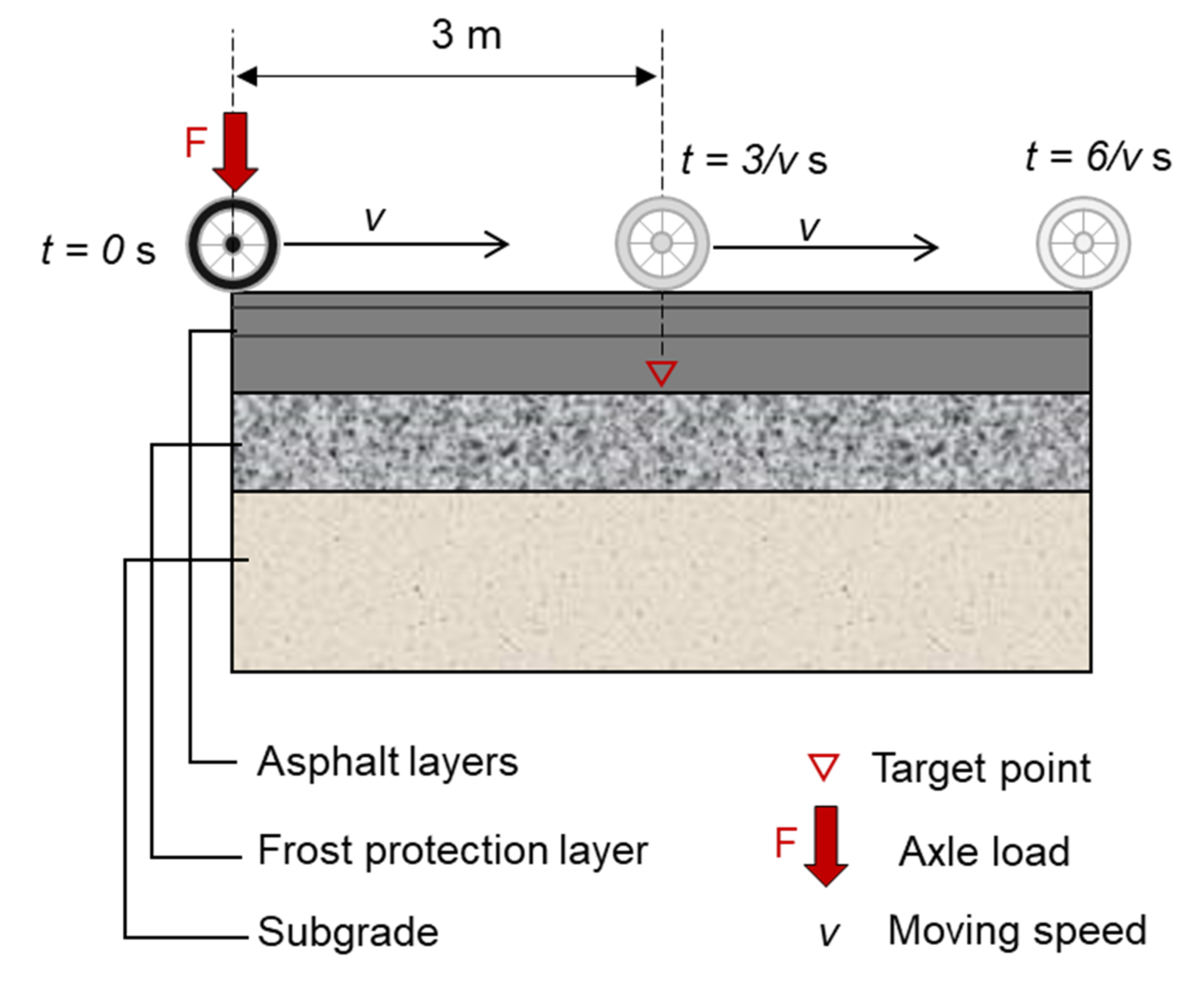
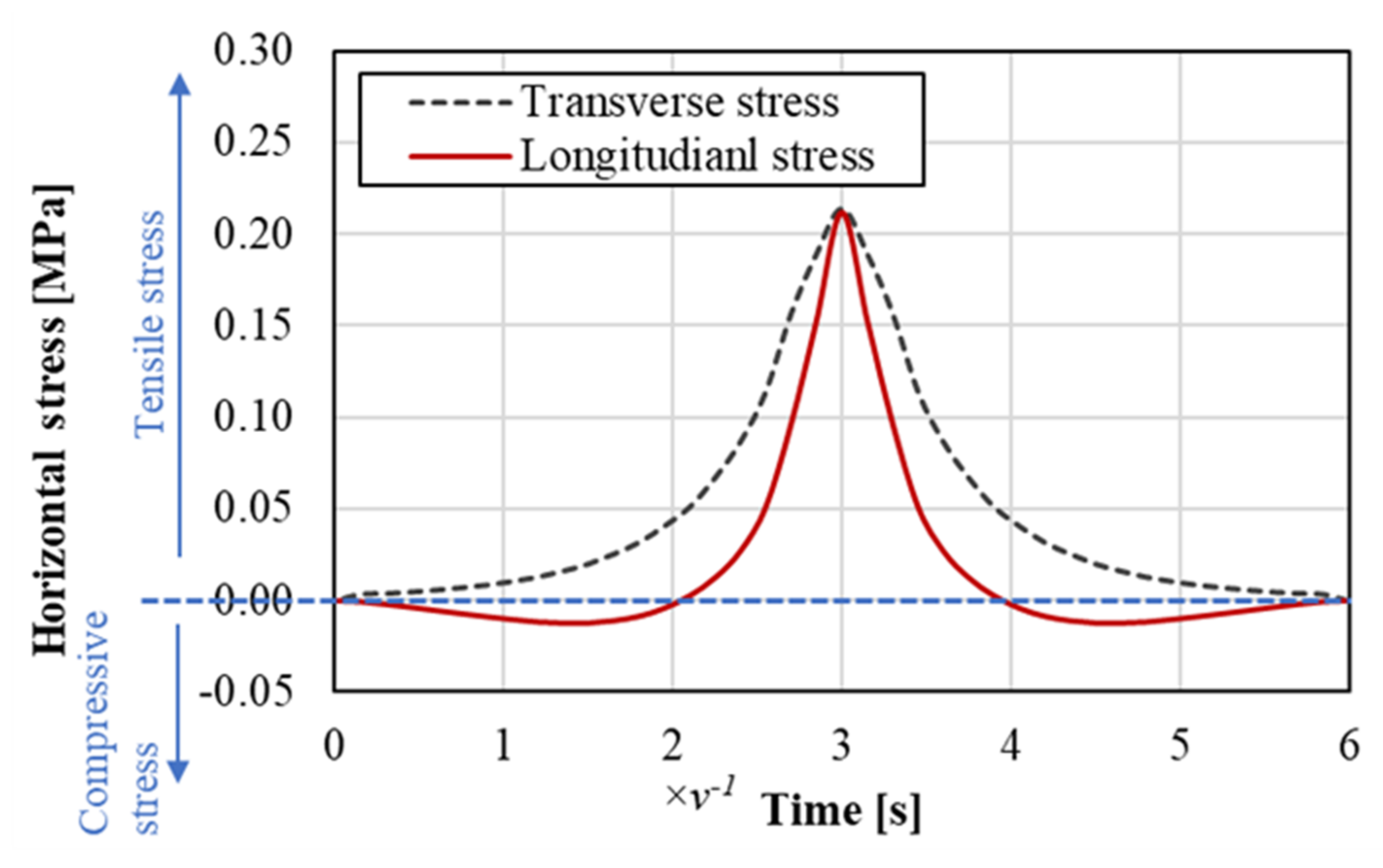
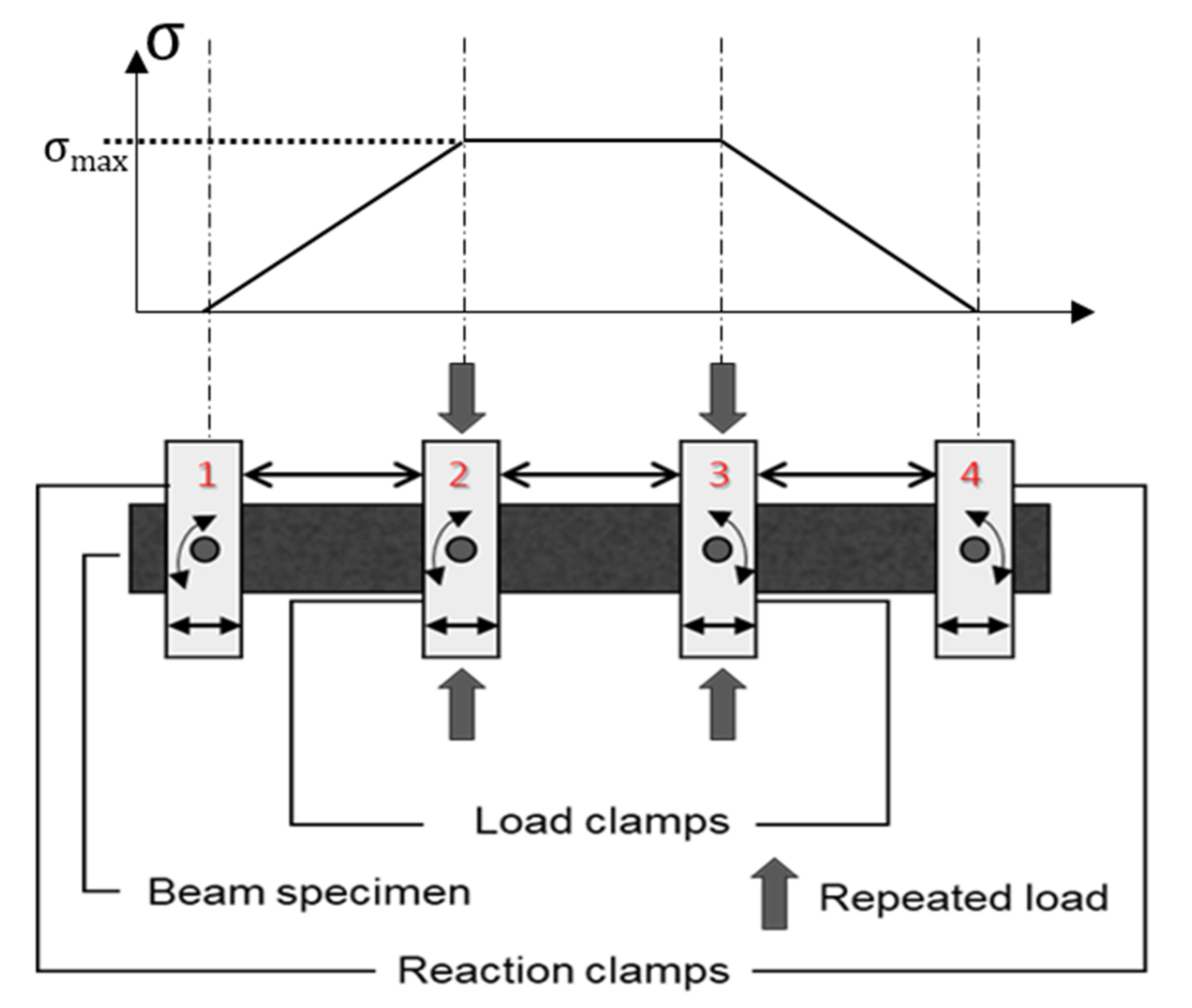
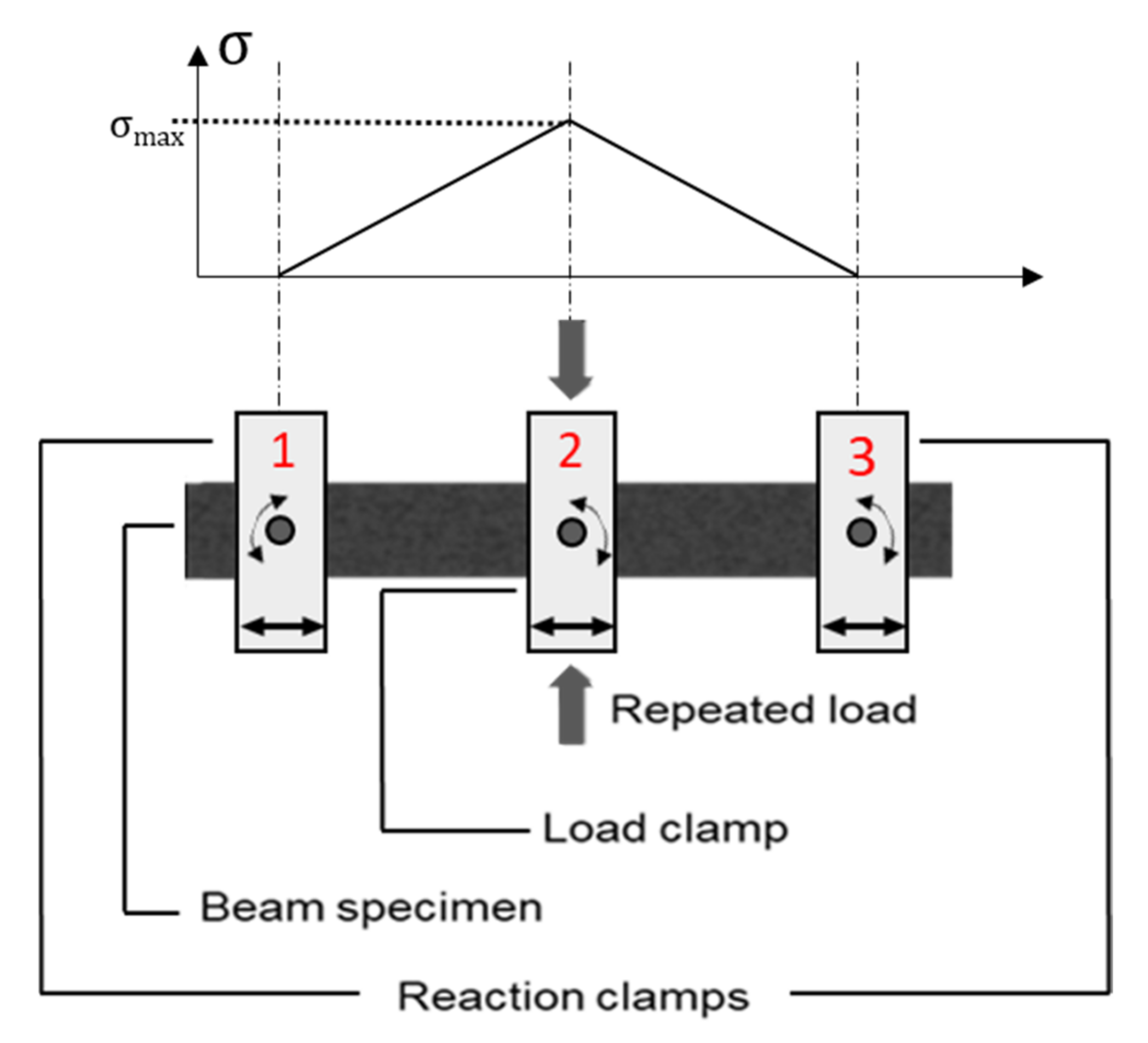
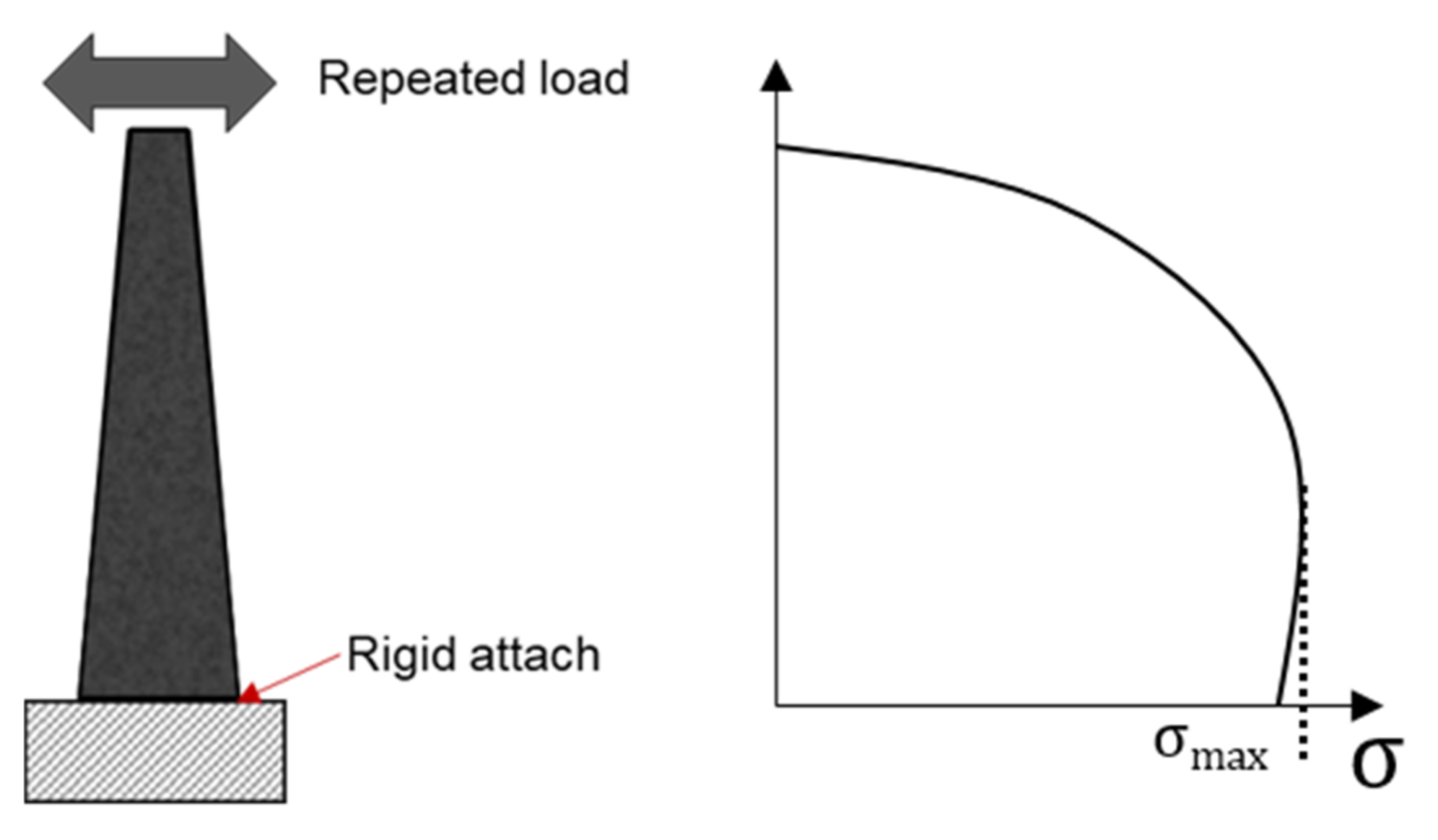
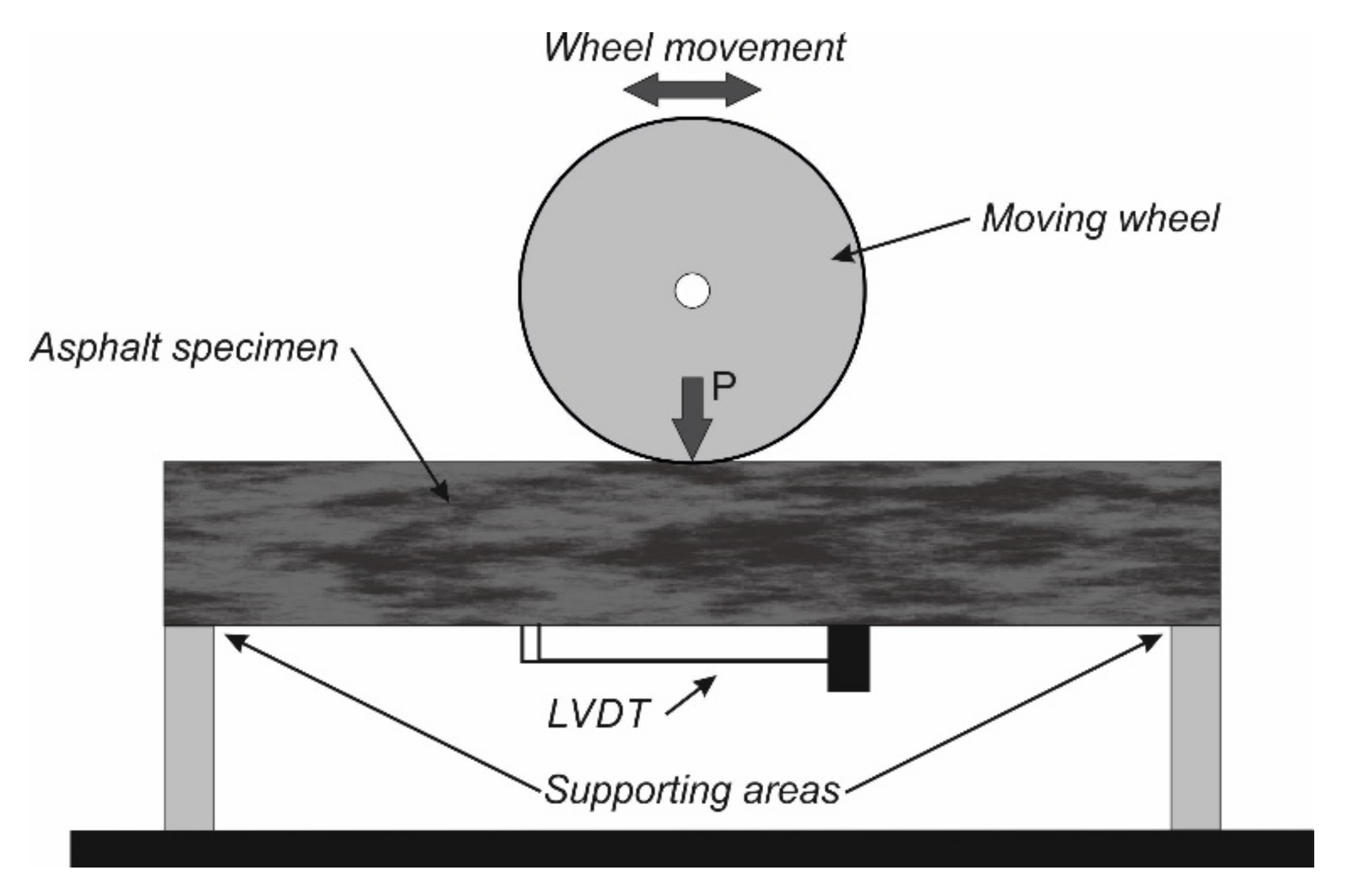
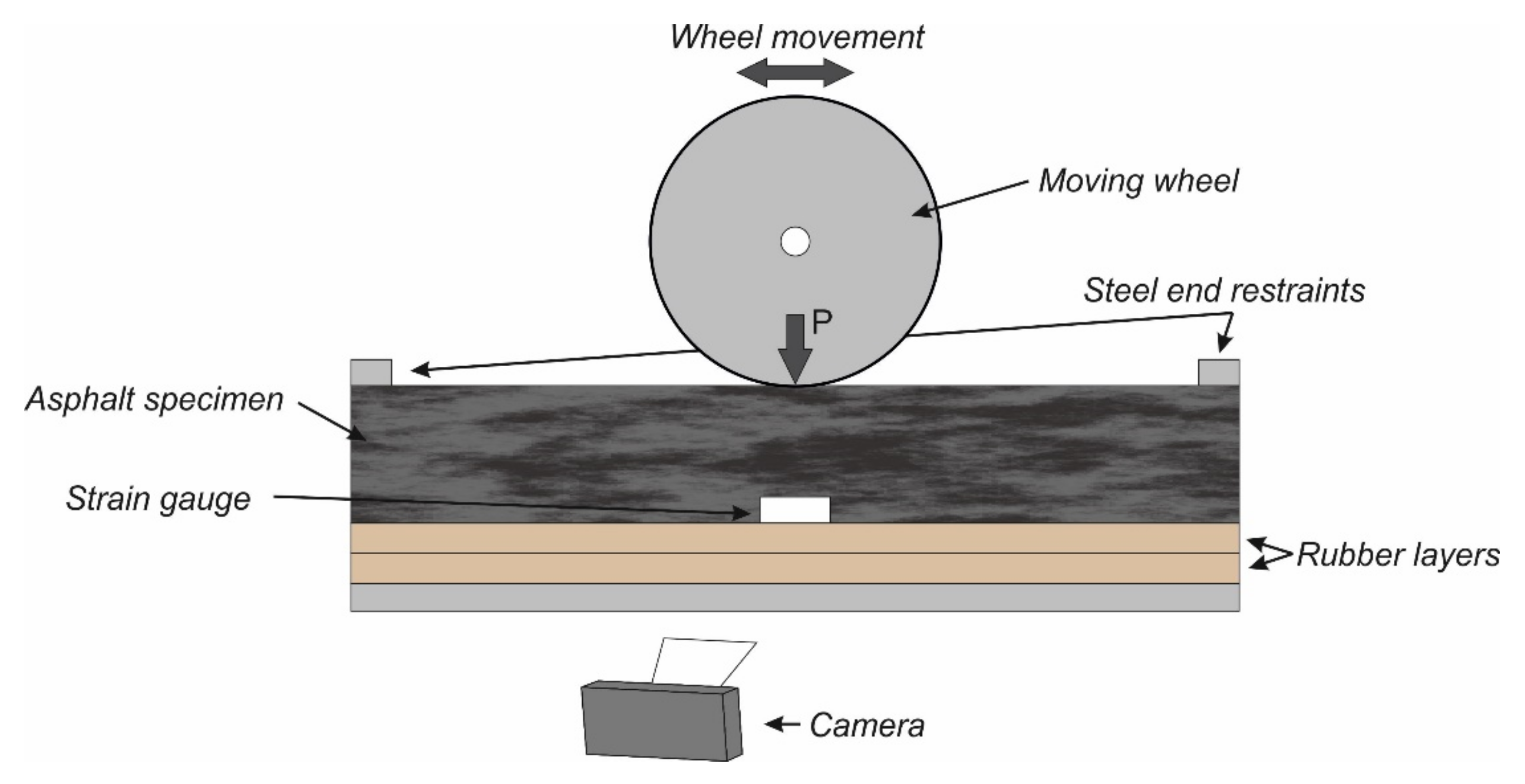
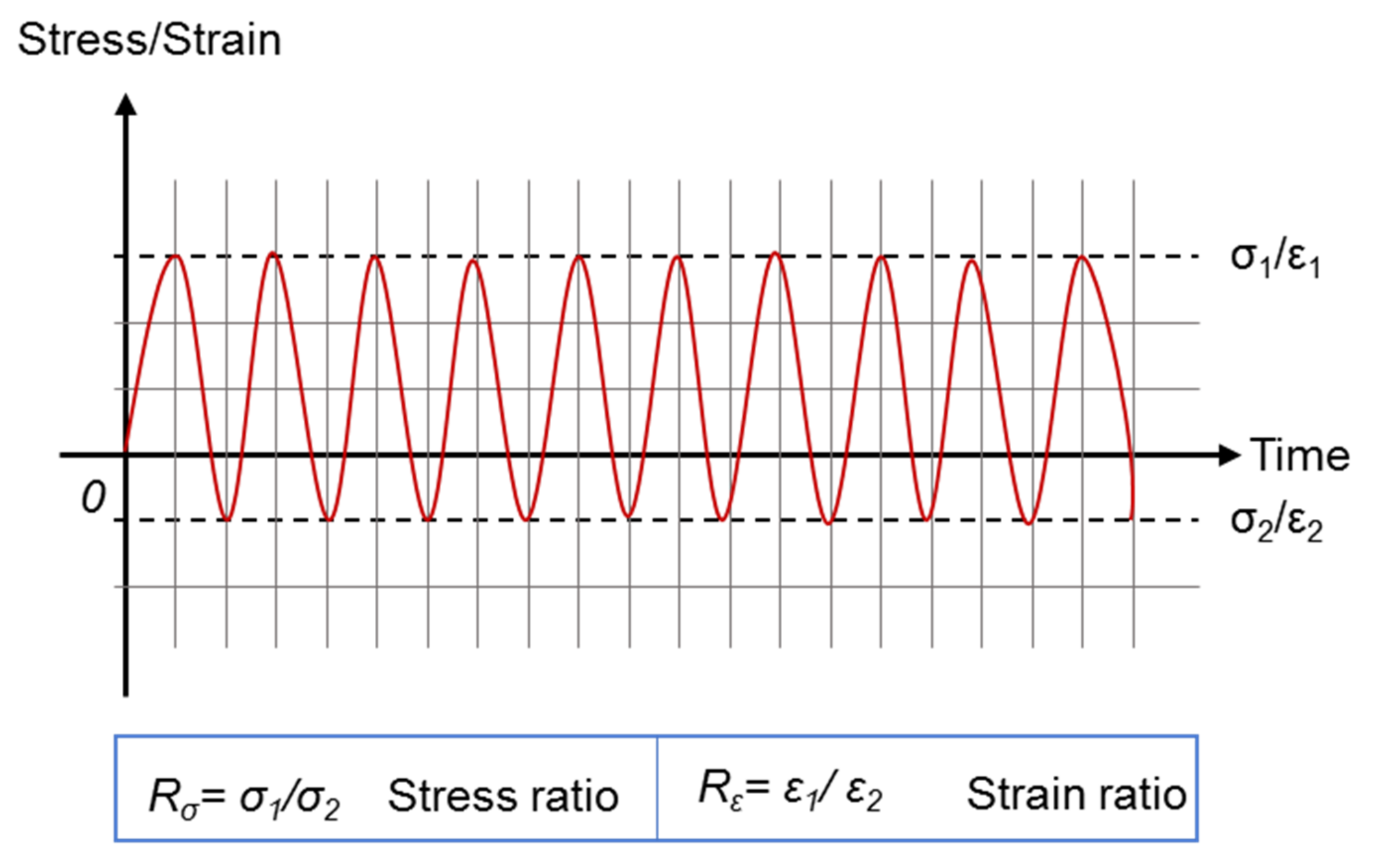
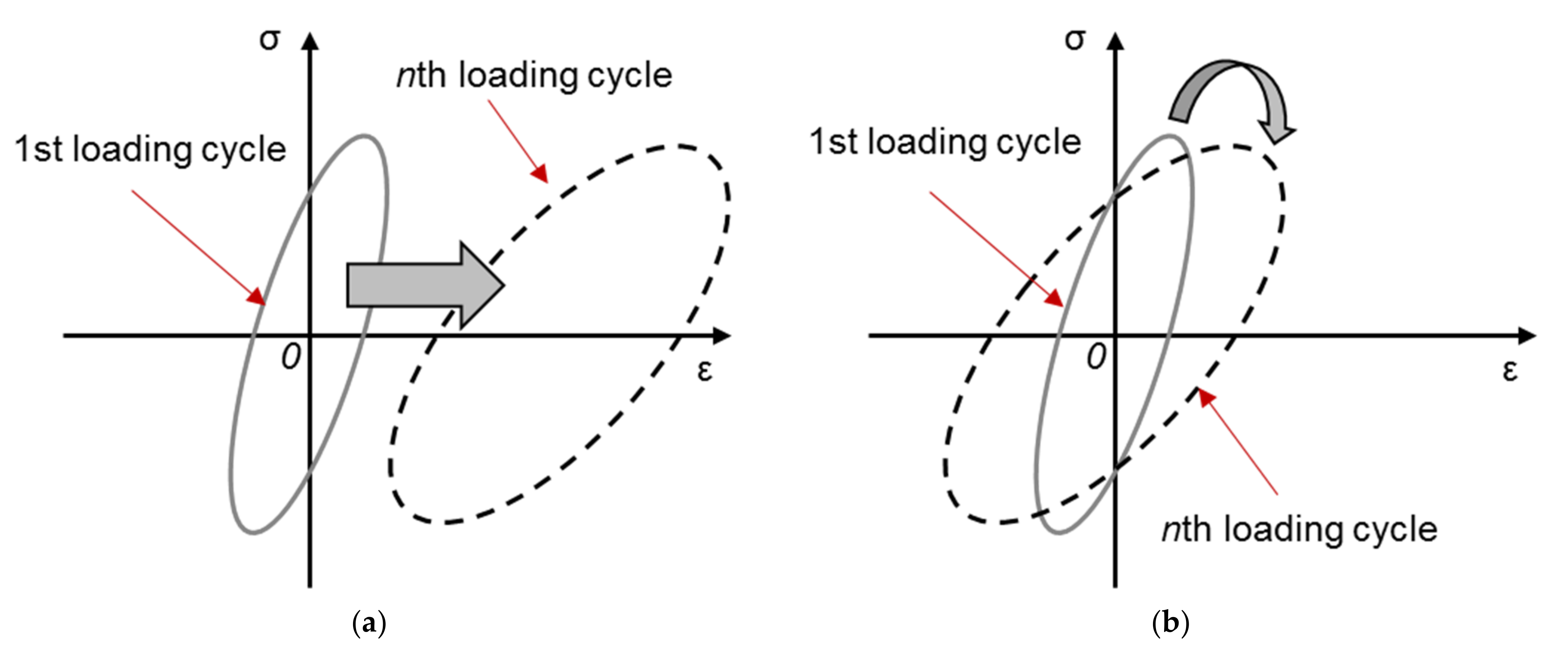
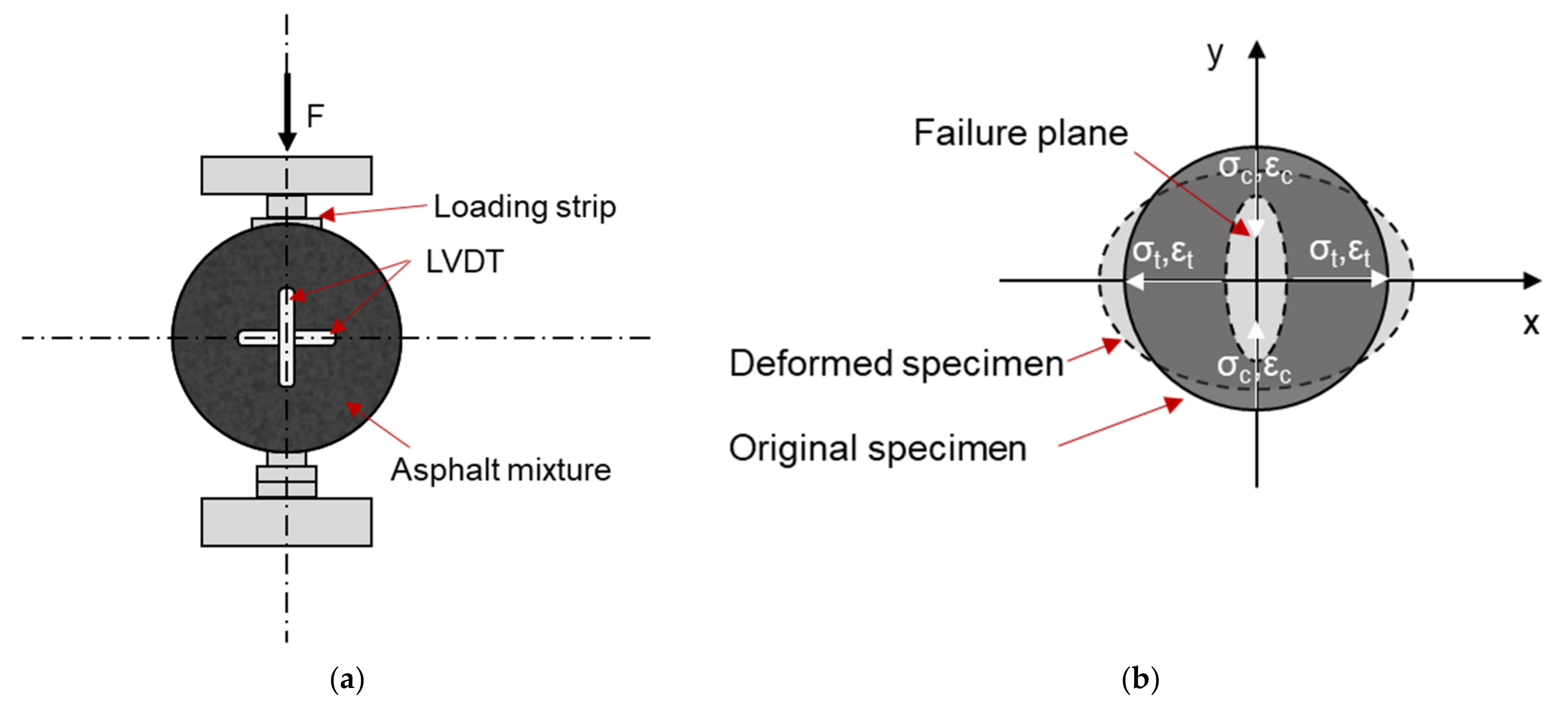



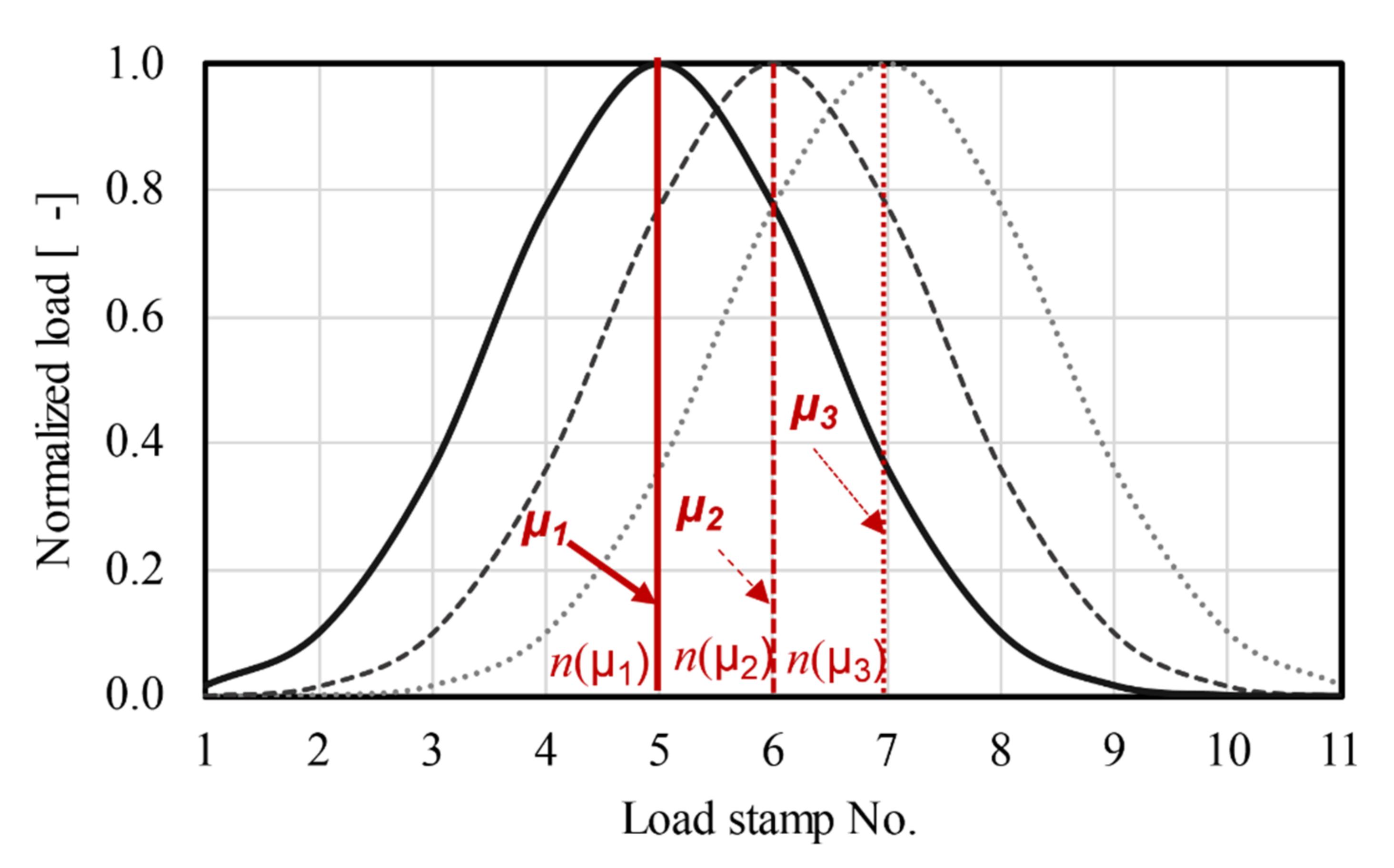

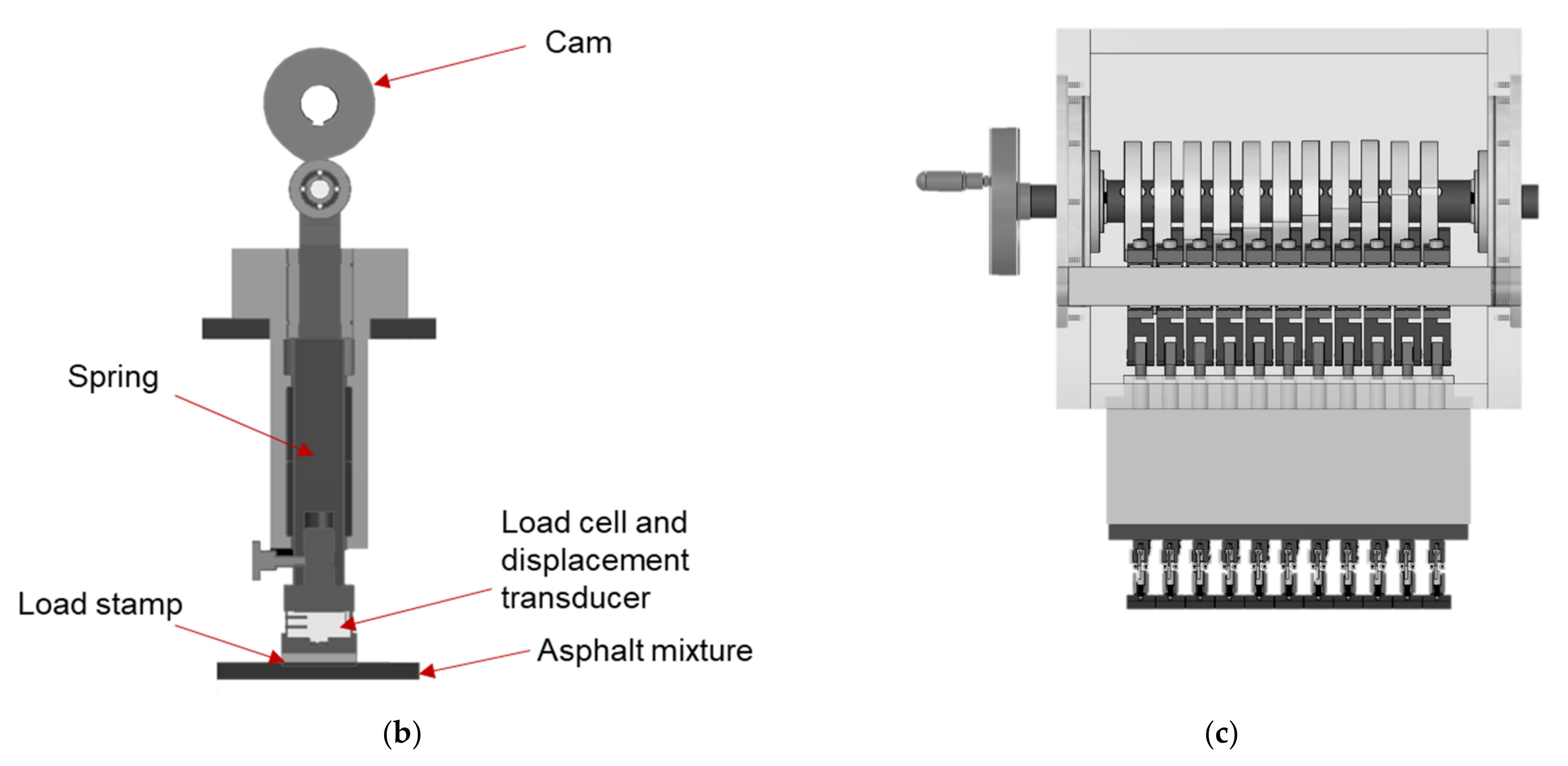
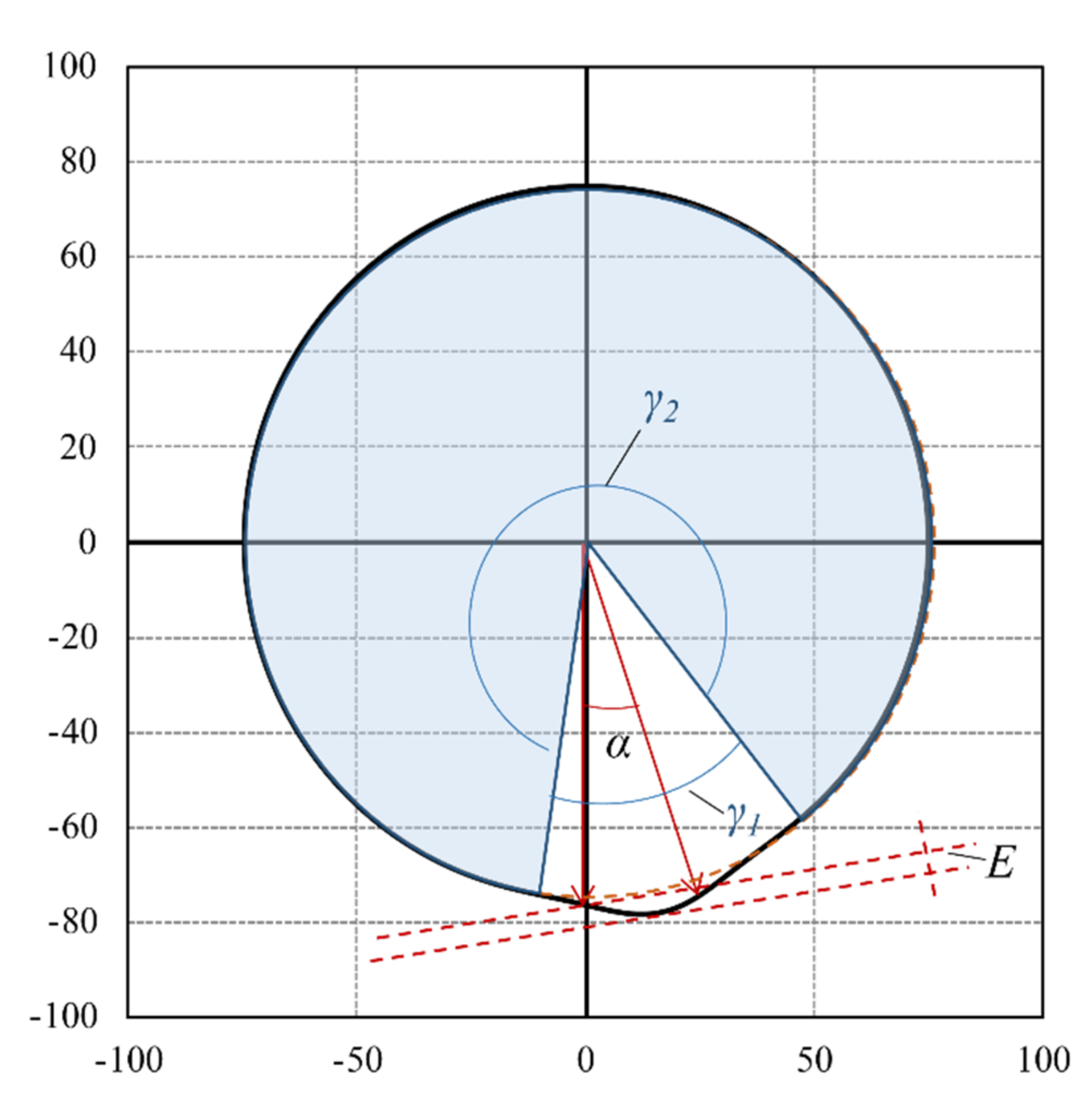

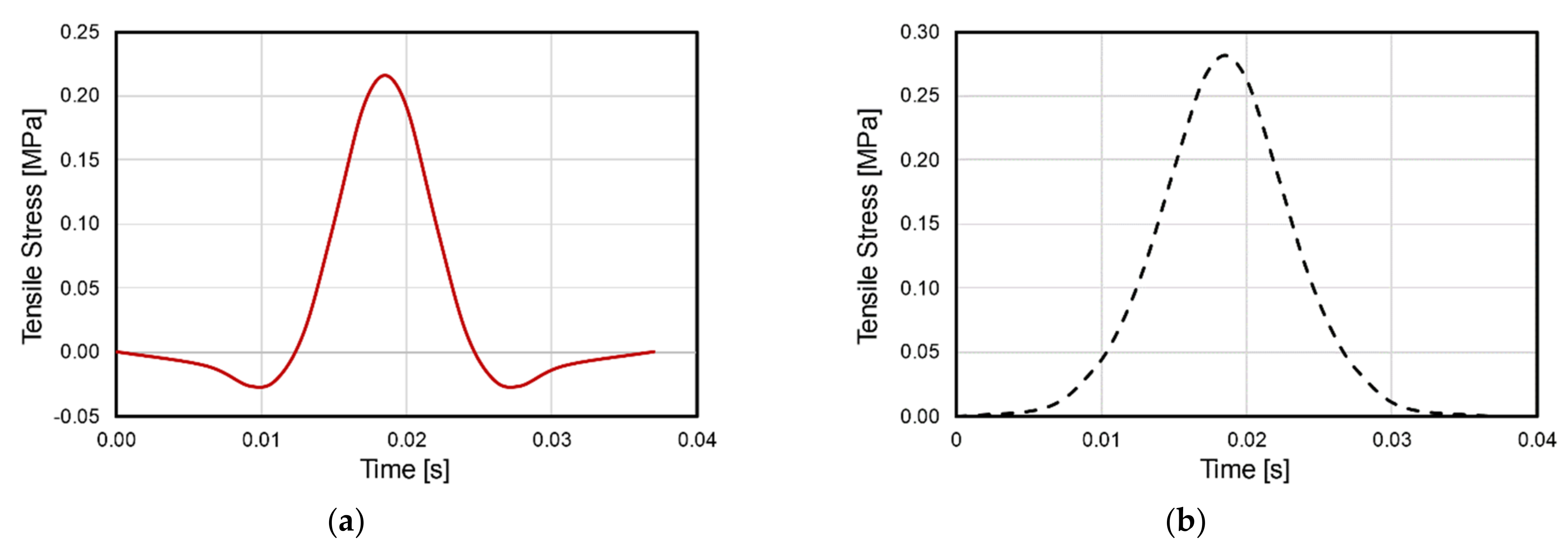
| Pavement Layer | Thickness [mm] | Elastic Modulus [MPa] | Poisson’s Ratio |
|---|---|---|---|
| Surface course | 40 | 5581 | 0.27 |
| Asphalt binder course | 80 | 9686 | 0.27 |
| Asphalt base course | 220 | 6481 | 0.27 |
| Frost protection layer | 510 | 325 | 0.35 |
| Subgrade | 2000 | 50 | 0.40 |
| Test | Test Specification | Loading Type | Measured Material Properties | Failure Occurs in a Uniform Stress/Strain Zone? | Stress Characteristics | Stress Reversal? |
|---|---|---|---|---|---|---|
| 4PB | AASHTO T321-14 ASTM D8237-18 EN 12697-24:2018 | Strain-controlled sinusoidal loading wave | Stress, phase angle | Yes | 1D * | Yes |
| 3PB | - | Strain-/stress controlled haversine loading wave | Stress/strain, phase angle | No | 1D | No |
| 2PB | EN 12697-24:2018 | Force-/displacement-controlled sinusoidal load | Displacement | No | 1D | Yes |
| Axial fatigue test | AASHTO TP107 | Force-/displacement-controlled | Stress/strain, phase angle | Yes | 1D | Yes (TCFT) |
| Loaded wheel fatigue test | - | Moving wheel load | Strain at sample bottom, sample deformation | No | 1D | Yes |
| ITFT | EN 12697-24:2018 | Sinusoidal/haversine | Strain | No | 2D | No |
| Shear fatigue test | - | Sinusoidal load | Stress/strain, phase angle | Yes | 1D | Yes |
Publisher’s Note: MDPI stays neutral with regard to jurisdictional claims in published maps and institutional affiliations. |
© 2021 by the authors. Licensee MDPI, Basel, Switzerland. This article is an open access article distributed under the terms and conditions of the Creative Commons Attribution (CC BY) license (https://creativecommons.org/licenses/by/4.0/).
Share and Cite
Zhang, Z.; Kohlmeier, J.; Schulze, C.; Oeser, M. Concept and Development of an Accelerated Repeated Rolling Wheel Load Simulator (ARROWS) for Fatigue Performance Characterization of Asphalt Mixture. Materials 2021, 14, 7838. https://doi.org/10.3390/ma14247838
Zhang Z, Kohlmeier J, Schulze C, Oeser M. Concept and Development of an Accelerated Repeated Rolling Wheel Load Simulator (ARROWS) for Fatigue Performance Characterization of Asphalt Mixture. Materials. 2021; 14(24):7838. https://doi.org/10.3390/ma14247838
Chicago/Turabian StyleZhang, Zeyu, Julian Kohlmeier, Christian Schulze, and Markus Oeser. 2021. "Concept and Development of an Accelerated Repeated Rolling Wheel Load Simulator (ARROWS) for Fatigue Performance Characterization of Asphalt Mixture" Materials 14, no. 24: 7838. https://doi.org/10.3390/ma14247838
APA StyleZhang, Z., Kohlmeier, J., Schulze, C., & Oeser, M. (2021). Concept and Development of an Accelerated Repeated Rolling Wheel Load Simulator (ARROWS) for Fatigue Performance Characterization of Asphalt Mixture. Materials, 14(24), 7838. https://doi.org/10.3390/ma14247838








